Plus a rare landscape/waterscape image from me.
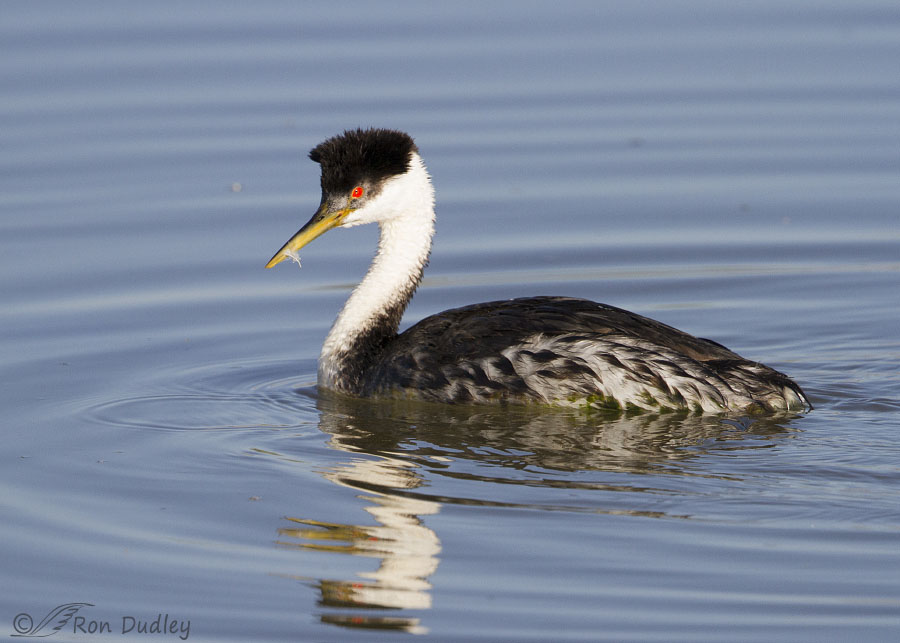
1/2000, f/6.3, ISO 500, Canon 7D, Canon EF 500mm f/4L IS II USM + EF 1.4 III Extender, not baited, set up or called in
On August 11, 2016 I spent considerable time with a mated pair of Western Grebes and their fledglings at Bear River MBR. I believe this to be the male of the pair but I can’t be sure. He plucked a small white feather off the surface of the water…
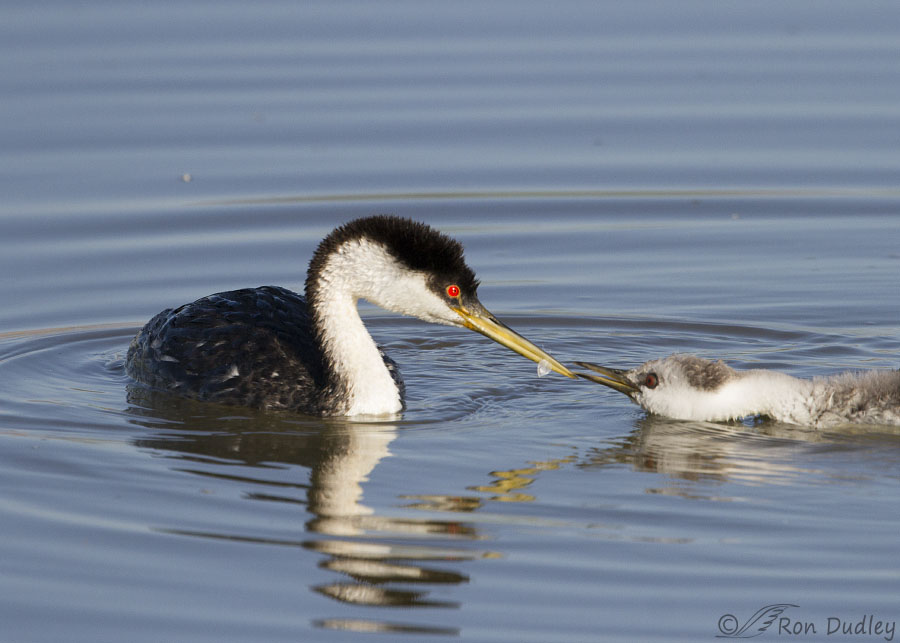
1/2500, f/6.3, ISO 500, Canon 7D, Canon EF 500mm f/4L IS II USM + EF 1.4 III Extender, not baited, set up or called in
and almost immediately swam over to one of his offspring and offered it to the youngster. In several of the initial photos of the behavior I didn’t have enough room to keep both birds entirely in frame so I cropped even more tightly to show a little more detail of the exchange.
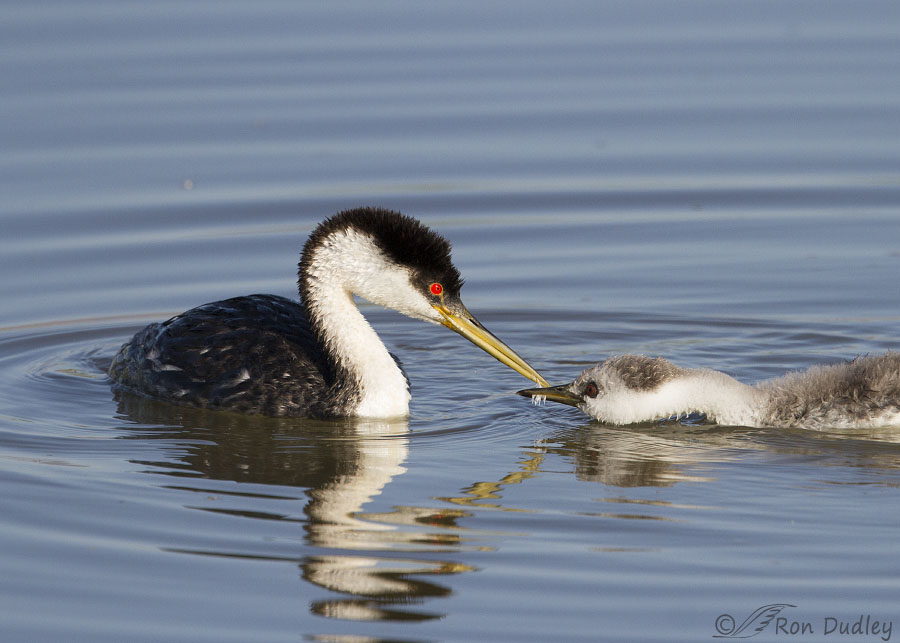
1/2500, f/6.3, ISO 500, Canon 7D, Canon EF 500mm f/4L IS II USM + EF 1.4 III Extender, not baited, set up or called in
The youngster grasped the feather in its bill…
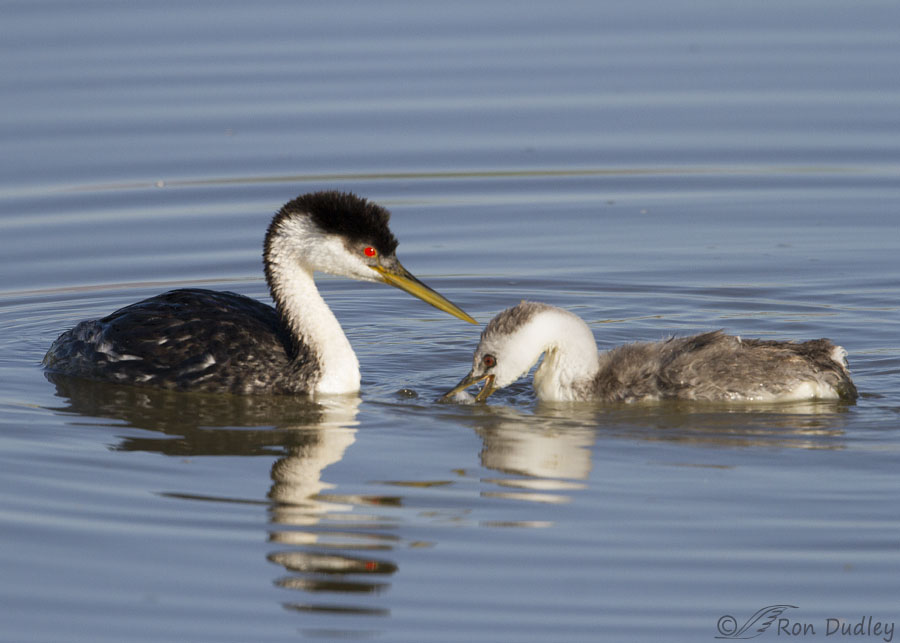
1/2500, f/6.3, ISO 500, Canon 7D, Canon EF 500mm f/4L IS II USM + EF 1.4 III Extender, not baited, set up or called in
but dropped it and had to retrieve it from the water.
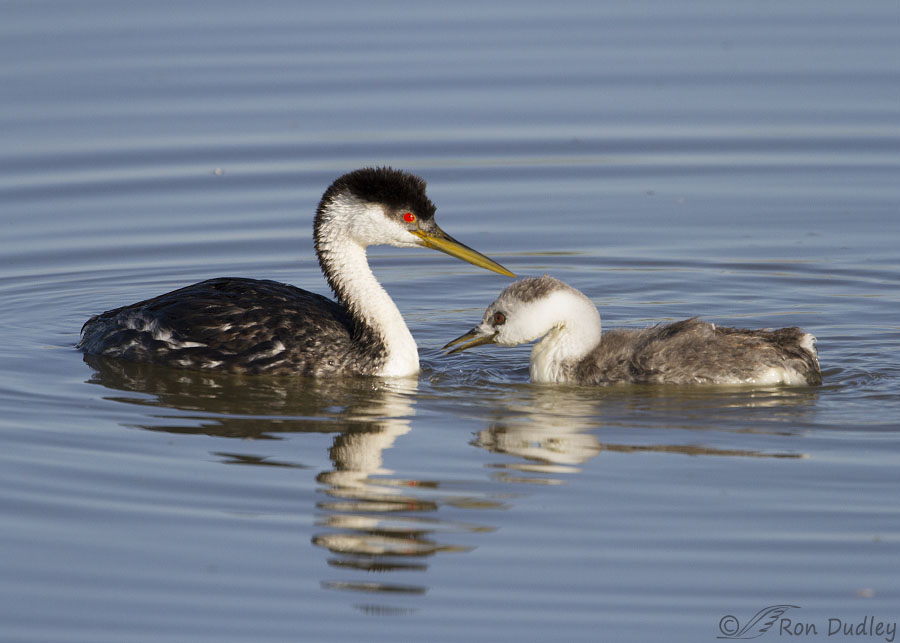
1/2500, f/6.3, ISO 500, Canon 7D, Canon EF 500mm f/4L IS II USM + EF 1.4 III Extender, not baited, set up or called in
Then it tried to maneuver the sticky, wet feather to the back of its bill for swallowing but…
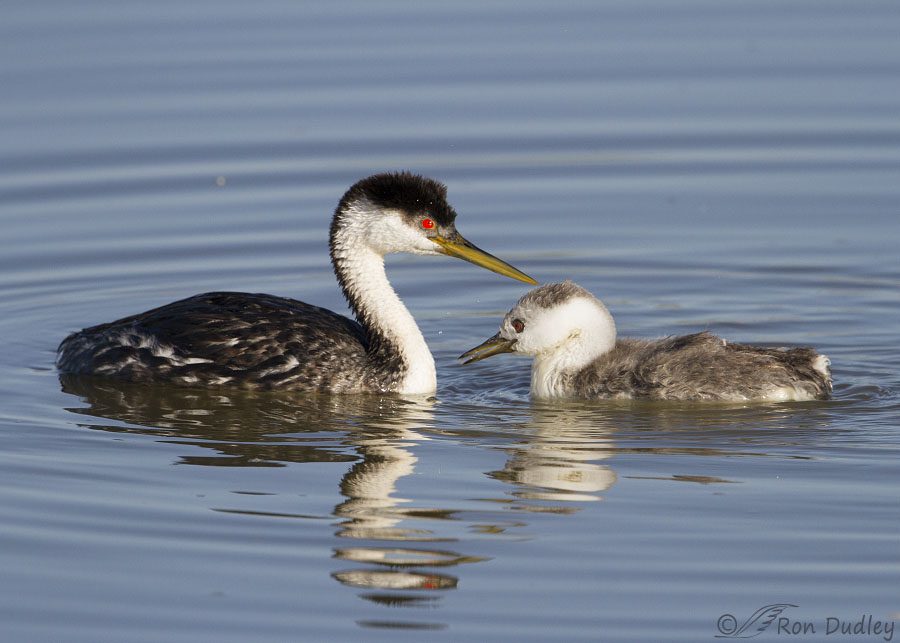
1/2500, f/6.3, ISO 500, Canon 7D, Canon EF 500mm f/4L IS II USM + EF 1.4 III Extender, not baited, set up or called in
for the inexperienced young grebe that proved to be easier said than done. For a moment part of the feather plastered itself against the front of its face and partially covered an eye. But eventually the feather was swallowed.
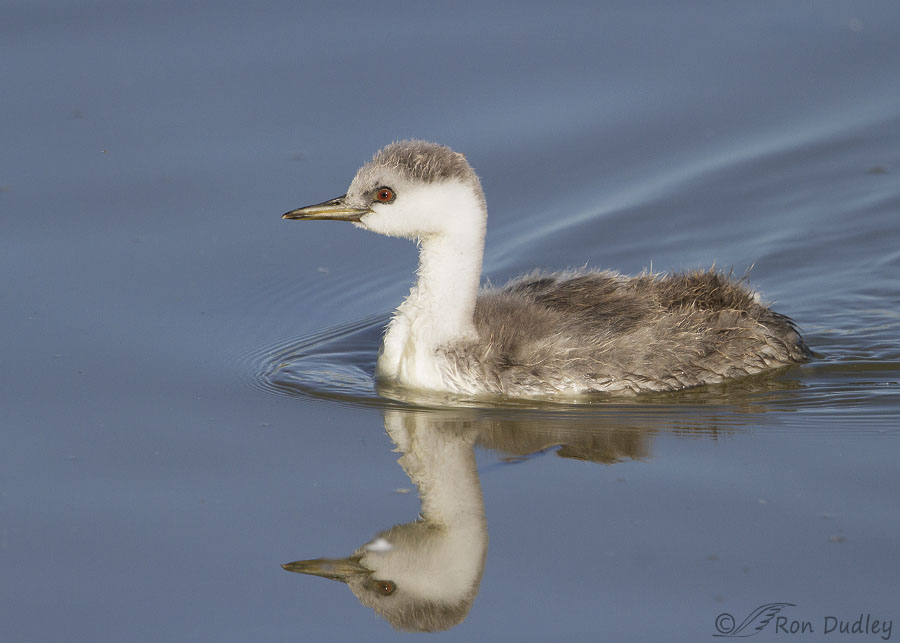
1/3200, f/6.3, ISO 500, Canon 7D, Canon EF 500mm f/4L IS II USM + EF 1.4 III Extender, not baited, set up or called in
A couple of minutes later the young grebe posed nicely for me, appearing to be happy and well-fed despite its seemingly unusual snack.
Many grebe species eat feathers, they eat lots of them and both adults and young birds do it. In fact feathers are often the first “meal” grebe chicks consume after hatching. At first glance the behavior would seem to be nonsensical since feathers are made of indigestible keratin (the same protein fingernails are made out of) but there’s method in their madness. I’ve covered the behavior in an earlier post and explained what we know about why they do it so I didn’t want to repeat all that here. But if you’re interested you can follow this link.
Ron
PS – On an unrelated note I thought some readers might be interested in seeing what it looked like on Antelope Island immediately after yesterday’s snowstorm. Park personnel reported up to 8″ of new snow on their Facebook page yesterday morning although by the time I got out there in early afternoon (late for me) much of the island seemed to have received less than that.
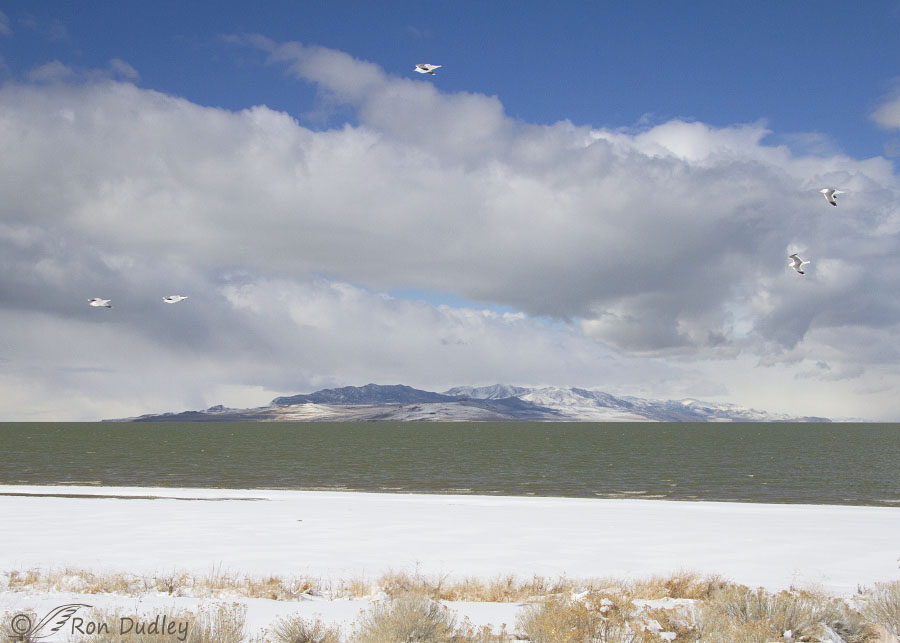
This photo was taken on the northern tip of the island in early afternoon yesterday. Here we’re looking north across a small arm of the Great Salt Lake. Normally the water is a deep blue or green but in inclement weather the combination of wind stirring up sediments in the shallow water and reflected clouds often changes the color to a more foreboding gray or gray-green. Yesterday the wind was from the north and it was cold.
In the foreground across the water we see Fremont Island in partial shade and behind it the southern tip of the Promontory Mountains (there’s normally water in-between them). Fremont Island has been populated with large feral pigs for decades and though they’ve tried to eradicate them they’ve apparently been unsuccessful in wiping them out completely. Occasionally pigs have been spotted attempting to get to Antelope Island from Fremont Island, especially when the water is low. Park personnel are very watchful for that happening because if pigs ever became established on Antelope Island it could become an ecological disaster.


Beautiful photos, Ron. Thank you
Wonderful behavioral series Ron!
Charlotte
Love the last shot Ron. Reflection and all. We were on the edge of that storm. We had rain, but the Mountains got snow. Pretty picture!
Thanks, Jean. Sounds like you had the best of both worlds with that storm.
Fascinating info. The last photo of the young grebe is curious. The “real” bird appears to have a white throat but the reflection has a white spot.
We can’t really see beneath the chin on the bird itself, Lyle. I suspect the white spot might be there if we could see it. Or perhaps that white spot might be something floating on the water, I’m not really sure. Either way, good eye.
How I love starting my day learning. And seeing a little of the landscape that it is so familiar to you.
It seems that the feathers work in a similar same way as fibre in our diet. An essential. Perhaps not the tastiest part of our diet, but necessary just the same.
Interesting point about the fiber, EC. Thanks.
Have I mentioned how much I appreciate (and enjoy) learning new things about birds? I know raptors eat the feathers/fur, which forms a pellet (almost) every day that they cast (eject)–the indigestible stuff. The feathers/fur act to keep their crop clean and functional. Just hatched raptors don’t get much in a first meal. And they’re not fed immediately after hatching, either. Their mother (evidently) wants to make sure their brand-new digestive system is working properly before giving them a real meal.
Before coming here, I knew nothing about grebes and I’m thinking they’re really cool now. Thanks so much for your intellectual enrichment. Once again, YOU ROCK!!
Thanks, Laura. And yes, grebes are really neat birds.
Love these photos and the information about the feather eating. So interesting.
The thought of those pigs makes my skin crawl. I sure hope those rangers are on top of this.
Ron, thanks for the great post.
“I sure hope those rangers are on top of this”
They try to be, Alice. But it’s a big and largely remote island and it’s virtually impossible to monitor all the areas all of the time.
That young grebe sure is a cutie!!!
Agreed, Patty.
Love those grebe photos and the “feather-eating info”. The last one of the young grebe is soooo beautiful! Really enjoyed seeing the landscape photo as well. Thanks again for sharing your work.
That portrait of the youngster is pretty special to me too, Joanne. Thank you.
The feather-eating seems such a good adaptation – defense against parasites – I wonder whether other birds do it too. I haven’t noticed it but will now look for it.
Grebes are the only birds I’m aware of that do it deliberately and regularly, Martha. Of course many predatory birds do incidentally swallow the feathers of their prey which are then regurgitated as pellets.
I’m a raptor person. But that final portrait of the young grebe is my favorite bird picture ever. It is astounding. Brought tears to my eyes. I’ve no idea why. Love’s like that, I guess. Mysterious as a thunderbolt, and about as rational.
It’s funny how some shots hit us like that, isn’t it, Sallie. And it’s often a very individual thing. Thanks for sharing how it made you feel.
Wonderful snowscape. Those feral pigs have caused problems in so many ecosystems. Hopefully, they’ll stay off Antelope. The Grebe-feather info is fascinating! I love learning something cool before 8 a.m.!
Ha, you must have had your coffee by then, Marty. I can’t even think before getting some of it in me which is one of the reasons I get up so early to finish my posts. Thank you.
No coffee yet, just one of many daily doses of poopy puppies. I was up from 2:30-4 with them and mama, but you hadn’t posted yet. Fortunately, they’re still very cute (mom included). Can’t wait until they’re ripe, though. 2-1/2 more weeks (not that I’m counting or anything!) 😉
I remember the previous post in 2014 well. This is a wonderful follow-up.
Is Fremont Island too large for a concerted effort by a number of people to canvass/eradicate/trap the island of feral pigs?
It’s pretty big. And rugged, Dick. If I remember correctly they used helicopters to hunt them and thought they had them all at one time.
Being an Easterner, probably think too small!
Certainly too bad, feral pigs can do a ton of damage.
Nice pictures Ron – here in Prescott the Pied-billed are very common, but we only see a small number of Western each year
Western, Clark’s, Pied-billed and Eared Grebes are common here. Thanks, Everett.
I always enjoy any series involving your Western Grebes, Ron. But I just adore the ones involving any exchange between the adults and the juveniles. Wonderful!
Thanks very much, Diane.
I certainly was unaware of the feather eating and possible reasons for it which make perfect sense…:) Thx for the shots and link talking about that behavior. Beautiful landscape photo, Ron. Certainly don’t need feral hogs anywhere! 🙁 Curses on those who have introduced them in various places over time…….! 🙁 Domestic hogs can cause enough trouble! I don’t know of anywhere eradication has been successful once they are there………
“I don’t know of anywhere eradication has been successful once they are there”
Exactly, Judy. That’s why park personnel are so wary of them getting on the island. Much of it is remote and if they ever became established there they’d probably be impossible to eradicate.